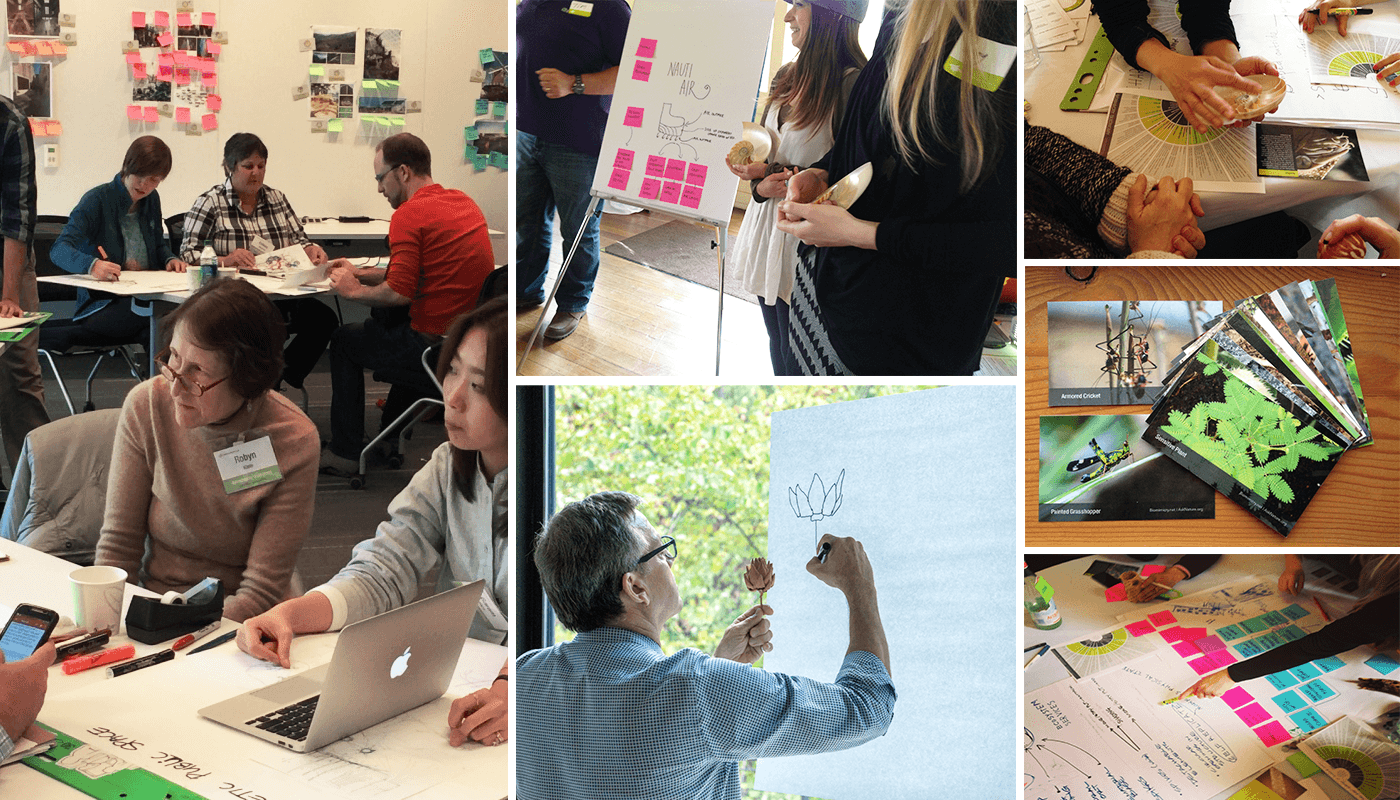Host Your Own Biomimicry Design Jam
By Seth GaleWyrick, Biomimicry 3.8 Engineering & Design
At Biomimicry 3.8 we love developing new ways for people to experience the potential of biomimicry, especially for their first time. It's impossible to master the methodology right away—we’ve been honing it for 20 years! It takes time to discover the most insightful and innovative lessons from nature. However, the core experience of ideating from biology can be had in an afternoon. We’ve previously shared one such approach focused on packaging and the circular economy. That activity includes a fun and innovative way to randomize brainstorming to help trigger diverse ideas quickly. Another of our favorite approaches is our take on a classic design jam. When you add biomimicry to the mix, this widely used tool becomes even more fun and powerful.
This is one of our favorite introductory activities to do with clients. We also use the Design Jam with teams stuck on a problem and needing a quick infusion of nature’s genius. It works equally well at the beginning of a new project when the solution space is wide open and a client wants to cast a broad net for inspiration. Whatever the reason, this is a great way to spend a few hours exploring the potential of biomimicry with your team. Here we’ll teach you how to set up and run your own Biomimicry Design Jam in a few simple steps.
STEP 1: COLLECT LEADS
If you’re familiar with design thinking or structured brainstorming in general, you’ll recognize related processes here. While brainstorming approaches are well known in the innovation world, ours differs by including amazing biological insights that can help generate truly innovative ideas. We call these inspiring pieces of info “bio-leads” or just “leads” for short. They’re biological intelligence briefs that apply to the class of problem you’re trying to solve. For example, if you're designing a bridge, you might want to look broadly at managing structural forces in nature. There are two key reasons for pulling broad insights: to stimulate divergent thinking and for the sake of time. Divergent thinking helps get the team “outside the box”. Time, of course, is practical. This type of tool is commonly needed in a pinch and it’s much quicker to gather biological insights with a wide scope.
You can collect the leads you need for the brainstorm in a few ways. Try typing your challenge into Ask Nature.org, a free collection of biological intel curated by our sister organization the Biomimicry Institute. Alternatively, a local biologist may be able to help, as could browsing at the zoo or botanical gardens. Even watching a few intriguing (and relevant) Planet Earth videos can be a source of inspiration. There are a lot of ways to discover insights—it just depends on how much time you have.
STEP 2: PREPARE YOUR LEADS
You can prepare your leads however you like. Ours are generally a collection of images and text (~100-200 words long) and contain these key components: name, biological background, and key lessons. As you can see in the honeybee example below, we try to keep the lead concise so it fits on a single sheet of paper. This makes it easy to hand out and share during the brainstorm. If you are interested in our lead collection process specific to one of your problems, we’d be happy to help. Contact us here for more info.
The front side of our leads includes an image of the organism and a description of the relevant natural history
The back side includes key lessons and additional photos or illustrations
STEP 3: DOWNLOAD OUR DETAILED FACILITATOR INSTRUCTIONS
Read through our step by step facilitator guide to familiarize yourself with the design jam process (available for download at the top of the page).
STEP 4: EXECUTE YOUR DESIGN JAM
Once you have your leads in hand, it’s time to set up and execute your design jam. Plan on a 3–3.5 hour long structured brainstorm based on the content in your leads. You’ll break into groups, map the leads to your challenges, and use them to ideate in new ways.
STEP 5: BE IN TOUCH
Once you’ve given it a go, drop us a line—we’d love to hear how it went and hear any feedback about the process.





